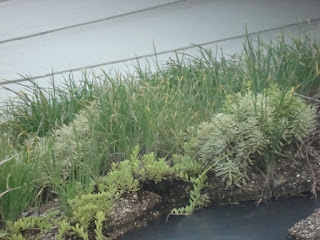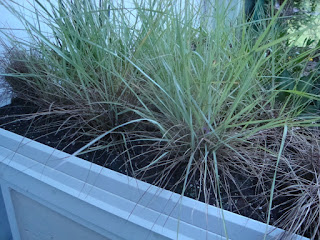

Every good plant person wants to use native species in their landscape. At least we all confess so anyway. Certainly the term is politically correct and in vogue by most regulatory agencies, municipalities and various conservation groups, native plant societies and NGO's.
I have just concluded several years native plant trials on flat and sloped green roofs - extensive green roofs that are not irrigated or fertilized. I've traveled across the State of Florida to various plant nurseries and native plant nurseries. I've purchased and accepted as free native plants to try on the roofs. We've watched them through 20 degree F weather and then through 150 degrees in the summer. Earlier this year we had an 11 week stretch where we received less than 1/2 inch total rain.
Roofs are a rough, tough place to put plants. Most have little concept of the harsh and unhospitable environment most roofs possess. The winds alone over Florida roofs are desiccating and will dry out most plants in a matter of hours.
Plants with high stomata to leaf surface ratio are doomed on a roof. Plants that cannot tolerate high humidity and sever swings in daily temperatures - 60 degrees F is not unheard of - are also doomed.
But Florida's sandhills and xeric uplands support native species with a promise of being able to tolerate the ultimate test of life on a roof.
Native grasses make it for a season or two, but the constant winds weaken their resistance and ultimately they fall prey to extreme drought or cold. We've looked at the leathery leafed native vines- railroad vine, for instance and again - though it comes back when planted in the ground after a hard freeze - it has not reliably recovered on the roof.
The native Allium canadense - or nodding onion - also shows promise.
Yucca's, such as the native Adam's Needle are strong contenders however they have a tall habit and may outgrow a roof.
Of course there are many South African and European plants that survive and prosper in these conditions. But they are not natives.
So why not irrigate? We have a water shortage and a mold problem in Florida. The first time an irrigated vegetated roof leaks and causes building mold issues, precedent will be set for every other building with vegetated roofs and mold, regardless of a leaking roof or not.
And Florida has a serious water stewardship issue. 50% of all potable water use right now is for irrigation. Good enough reason to not irrigated a vegetated roof.
Many will never be convinced of the irrigation issue - but we are making progress. Native can work. Finding the right species for the right roofs takes time.
The above pictures are of Elliot's Lovegrass on a flat trial panel and Allium canadense on a sloped roof.
Send me your thoughts... & Happy green roofing!
1 comment:
Native plants are being used for your work..
___________________
Britney
Get Instant money
Post a Comment